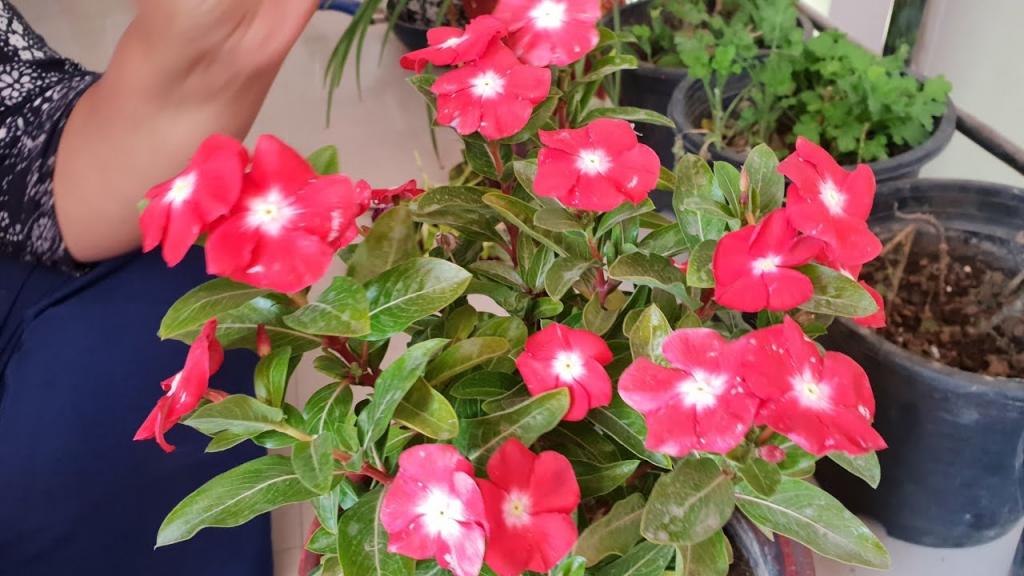Vinca, also known as periwinkle, is a popular flowering plant found in many gardens. While some gardeners let their vinca continue growing into the winter, others choose to cut it back to keep it tidy. So when is the best time to trim vinca, and how far back should you cut it? In this beginner’s guide, we’ll discuss when and how to cut back vinca for winter.
When to Trim Vinca
Vinca is a low-maintenance plant that blooms from spring to fall in most climates. It will continue flowering through frost and light freezes. For this reason, some gardeners delay cutting back vinca until late fall or early winter. However, trimming vinca in early fall allows time for new growth before winter dormancy.
The ideal window for cutting back vinca is typically September through November You can trim vinca even later in mild climates if it remains green and healthy Pay attention to your first fall frost date when deciding exactly when to prune, Cutting vinca back 1-2 weeks before your average first frost is a good rule of thumb,
How Far to Cut Back Vinca
When trimming vinca for winter, most gardeners cut it back by about one third to one half its height. This stimulates bushy new growth while removing dead stems and spent flowers. Cutting more than halfway risks excessive dieback or killing the plant. Here are some tips on how far to prune vinca in different situations:
-
For moderately overgrown vinca, cut back by one third. This is a light trim that removes old stems and shapes the plant.
-
To rejuvenate severely overgrown or damaged vinca, cut back halfway. This more aggressive pruning promotes new growth.
-
For vinca grown as a groundcover, mow or shear to 3-4 inches high before winter. This clears away debris and old foliage.
-
In very cold climates, prune vinca less to avoid winterkill. Cutting back by one quarter or less leaves more stems insulated.
-
For potted vinca, trim stems halfway to keep the plant from becoming overgrown and root bound indoors.
The Best Method for Cutting Back Vinca
The most efficient way to trim vinca is using bypass pruning shears. Sterilize the blades first with rubbing alcohol to avoid transmitting disease. Then follow these steps:
-
Start pruning in early fall, before your first frost. For overgrown vinca, trim back halfway. For light maintenance, prune back by a third.
-
Cut each stem separately down to a leaf node. Make cuts at an angle to shed water and prevent rotting.
-
Remove all dead or damaged growth. Also prune out stems that cross or rub together.
-
Shape and thin the plant if desired. Pruning stimulates bushy, compact growth.
-
Rake up and discard all pruned debris when finished to prevent disease issues.
Bypass pruners make quick work of pruning most vinca. But if you have a large vinca groundcover, use a lawn mower or string trimmer to shear the entire area at once 3-4 inches high. Rake thoroughly after shearing vinca to remove all fallen debris.
Pruning Potted Vinca
Vinca grown in containers requires some seasonal pruning too. Trim potted vinca in early fall by cutting each stem back by about half its length. This prevents the plant from becoming overgrown and root bound indoors. Pinching off spent flower heads during summer also encourages continuous blooms.
Before bringing potted vinca indoors for winter, check the roots. If the plant is root bound, repot it in a larger container using fresh potting mix. Prune the roots and stems as needed to remove circling or tangled growth. Repotting before moving vinca inside ensures healthy roots and continued growth indoors over winter.
Avoiding Common Mistakes
Cutting back vinca too late, too early, or too severely are some common pruning mistakes. Here are a few tips to prune vinca successfully:
-
Don’t delay pruning until after a hard freeze. This risks damaging cold-damaged stems.
-
Avoid pruning in summer or mid-to-late winter. Vinca needs time to recover before frost.
-
Don’t cut vinca back to the ground or prune by more than half. This can kill the plant.
-
Sterilize tools before pruning and clean up debris after to prevent disease issues.
-
Wear gloves and long sleeves when pruning to avoid skin irritation from the sap.
When to Leave Vinca Alone
Not all gardeners prune back their vinca for winter. If your climate is very mild, vinca may keep growing and flowering year-round. The main reasons to trim vinca are to:
-
Remove dead growth and shape overgrown plants before dormancy.
-
Control spread for vinca grown as a groundcover.
-
Prevent tubbed vinca from becoming root bound indoors.
If none of these are concerns in your garden, leaving vinca unpruned is an option. Keep an eye on winterkill, however. Severe dieback indicates the plant would benefit from some renewal pruning next fall.
Encourage Abundant Blooms Next Spring
Cutting back vinca at the right time and the proper amount keeps it flowering and under control. Pruning in fall helps remove old, damaged stems and stimulates new growth. A well-timed trim before winter leads to a vigorous, floriferous vinca that blooms abundantly next spring. Just be sure to disinfect tools and clean up debris after pruning to maintain healthy plants.

